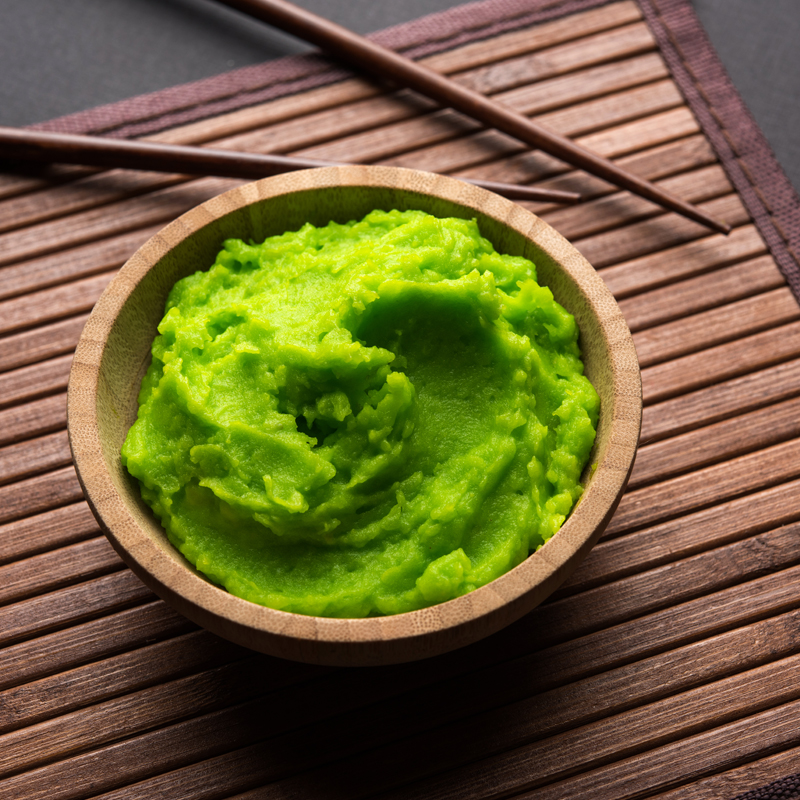
100 gr |
-- |
|
|---|---|---|
| Carbohydrate (gr) | 15.04 |
4928.47 |
| Protein (gr) | 3.59 |
1176.23 |
| Fat (gr) | 12.46 |
4083.43 |
| Fiber (gr) | 1.36 |
445.97 |
| Cholesterol (mg) | 14.64 |
4795.8 |
| Sodium (mg) | 325.27 |
106557.75 |
| Potassium (mg) | 392.16 |
128471.4 |
| Calcium (mg) | 78.15 |
25603.27 |
| Vitamin A (mg) | 46.04 |
15084.01 |
| Vitamin C (mg) | 6.16 |
2019.31 |
| Iron | 0.62 |
203.1 |
Wasabi is a traditional Japanese condiment known for its distinctive pungent and spicy flavor. Made from the grated root of the wasabi plant (Wasabia japonica), it has been a staple in Japanese cuisine for centuries.
Wasabi is more than just a condiment—it’s a flavor enhancer with a rich culinary and cultural heritage. Whether enjoyed with sushi or as part of innovative recipes, its spicy kick adds depth and excitement to dishes.
The calories of wasabi sauce are 292 calories per 100 grams.
Flavor Profile:
Wasabi’s flavor is sharp, spicy, and slightly bitter, offering a unique heat that dissipates quickly compared to chili-based spiciness. This characteristic makes it an exciting addition to dishes without overpowering them.
Common Uses:
Health Benefits:
Fresh Wasabi vs. Imitation:
Fresh wasabi is made from the grated rhizome of the wasabi plant and has a more subtle, complex flavor. However, many commercially available wasabi products are made with horseradish, mustard, and green food coloring as a cost-effective substitute.
Tips for Enjoying Wasabi